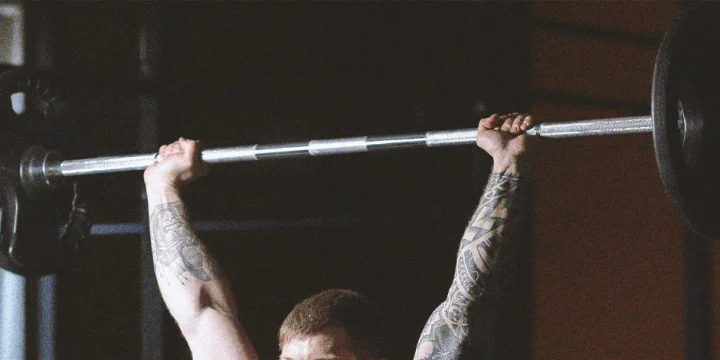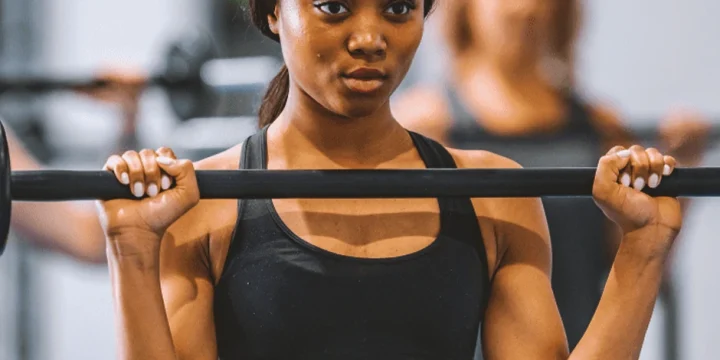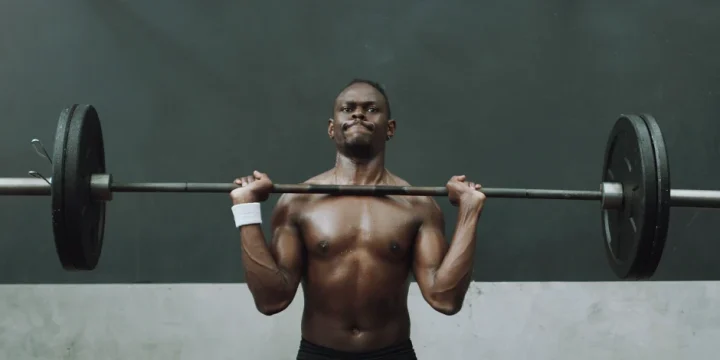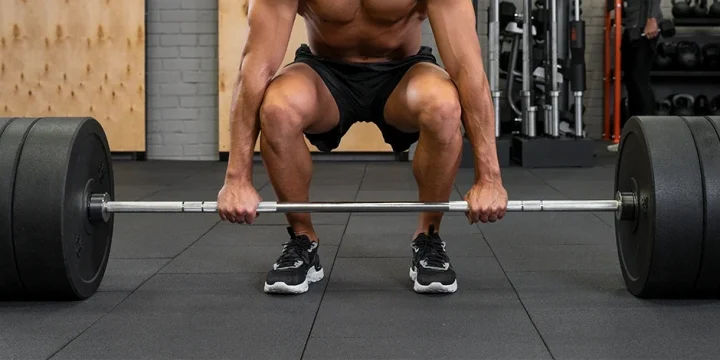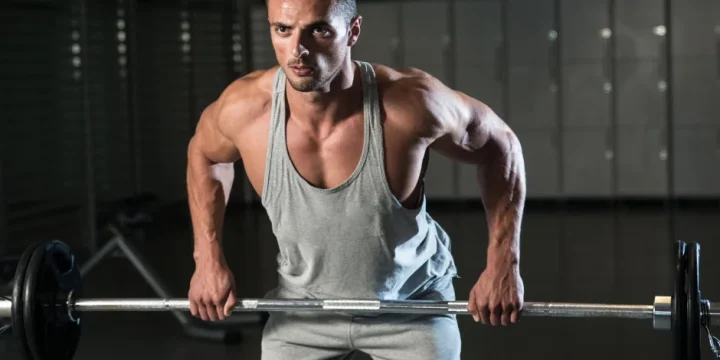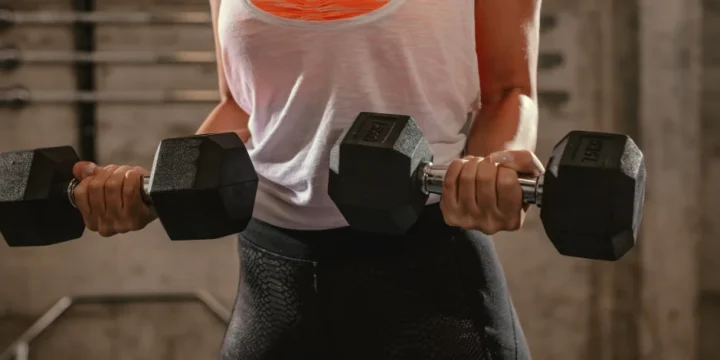Plyometric exercise like frog jumps is a fantastic way to get the heart pumping, burn calories, and build up stronger leg and core muscles.
To help our readers and clients avoid some common mistakes, we called up a team of five personal trainers to come up with instructions for the frog jump exercise that will help avoid injuries.
We also had a physio provide research on what muscles the frog jump will target.
Quick Summary
- To perform frog jumps, stand with your feet wider than shoulder-width, squat deeply, and explosively jump upwards, extending your legs, then land softly with bent knees and repeat for desired repetitions.
- It’s important that you slow down the concentric part of the movement and maintain good posture to avoid unnecessary strain with a high-impact frog jump.
- Frog jumps primarily target lower body muscles like the quads, hamstrings, and glutes while also activating the hip flexors, as noted by the American Hip Institute of Orthopedic Specialists.
- In my opinion, incorporating frog jumps into a workout routine is an excellent way to combine strength and cardio training, especially for those looking to improve lower body power and endurance.
How To Do Frog Jumps

As a trainer, I emphasize the importance of good form and better posture when guiding clients through frog jumps.
Here’s what you need to do:
- Get into the starting position with your feet slightly wider than shoulder-width apart and a slight bend in your knees.
- According to ScienceDirect, the first concentric stage of frog jumps is a slow and deep squat to get your buttocks as low as possible while maintaining a neutral spine [1].
- Keep your core engaged on the way down, and once you get to the bottom, jump explosively up.
- You can either keep your hands behind your head or reach down and then bring them up over your head as you jump.
It’s important to achieve proper form here and focus on a slow downward movement with a neutral spine.
If you can maintain these, then, according to the National Institute of Health, you’ll avoid injury and find significant improvements in your muscles [2].
Mistakes to Avoid
- Incorrect landing technique: A common mistake in frog jumps is landing with straight legs or on the toes. This can lead to knee and ankle injuries. Always aim to land softly with knees slightly bent, absorbing the impact through your legs and distributing it evenly.
- Overextending the knees: Avoid letting your knees extend over your toes while jumping or landing. This puts undue stress on the knees. Instead, focus on keeping your knees aligned with your feet, ensuring they don't jut out too far forward.
- Neglecting core engagement: Many people forget to engage their core during frog jumps. Not using your core can lead to a lack of stability and balance, increasing the risk of falls or improper form. Keep your core tight throughout the exercise to maintain balance and control.
- Ignoring upper body posture: Ignoring the posture of your upper body is a mistake. Slouching or hunching over can strain the back. Maintain a neutral spine with a slight forward lean from the hips, keeping your head up and shoulders back to ensure a safe and effective workout.
What Muscles Does This Exercise Target?

Frog jumps, aka jump squats, will mainly target leg muscles in your upper legs.
Here is some background research my physio provided.
The primary muscles you’ll target are in the lower body and are mainly the thigh muscles, including the quads, hamstrings, and glutes.
But, according to the American Hip Institute of Orthopedic Specialists, you’ll also activate the hip flexor muscles by exercising [3].
The secondary muscles you’ll impact are your core and calf muscles.
You won’t feel maximum strain in these muscle groups, but it’s enough to build up strength.
“Plyometrics is a form of exercise that uses powerful, rapid movements to help increase a person’s speed and power.”
- Daniel Bubnis, M.S.
Related Articles:
Benefits of This Exercise

One of the most obvious benefits of frog jumps is that you will gain strength and muscle mass in your thighs.
The higher you dial up the intensity, the stronger your legs will become.
But you’ll also find that this is a high-intensity workout that will burn a lot of calories, and that makes it ideal for general weight loss or cutting phases.
And because frog jumps will get your heart pumping, they are a great way to include an additional cardio workout to help burn fat while building strength.
The more you dial up the intensity, the better the cardio results will be.
Frog Jump Alternatives
There are two options that you have to modify frog jumps.
First of all, rather than jump upwards from the squat position, you jump forward and repeat the process for a certain distance.
You sometimes see this in CrossFit deadlift workouts where the distance then gradually increases.
The second option is to put on a weighted vest.
It will make it slightly more difficult to keep your chest upright and will add a lot more strain to muscles from the squat position.
FAQs
What Is A Frog Jump Exercise Good For?
A frog jump exercise is good for building leg muscle strength and cardio health. The plyometric form of exercising allows you to increase the intensity and get your heart pumping while adding a lot of strain to your thighs.
Why Are Frog Jumps So Hard?
Frog jumps are so hard, as it takes a lot of strength and fitness to do more than just a few of them. Doing them consistently and keeping track of your progress will show how effective they are at building up more leg strength.
References:
- https://www.sciencedirect.com/topics/immunology-and-microbiology/concentric-muscle-contraction
- https://pubmed.ncbi.nlm.nih.gov/35312884/
- https://www.americanhipinstitute.com/blog/hip-flexor-muscles-anatomy-33981.html
About The Author
You May Also Like
